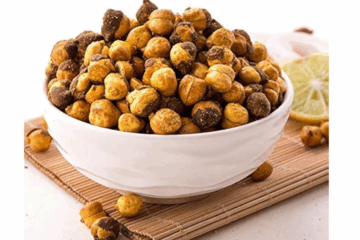Hing, also known as asafoetida, has been widely used in Indian and Persian traditional medicine. But can hing also enhance libido? Let’s explore its ancient reputation and modern take on whether hing is truly a natural aphrodisiac.
What is Hing, and How Was It Traditionally Used in Ancient Medicine or Rituals?
Summary: Hing is a resin with a pungent smell used in Ayurveda and Unani medicine for digestion, respiratory health, and libido stimulation.
Traditionally, hing played an important role in healing and ritualistic practices due to its warming and stimulating properties:
- Ayurvedic Use: Used to balance Vata and Kapha doshas and improve digestive fire (Agni).
- Unani Medicine: Considered a libido enhancer and remedy for impotence in men.
- Ritual Applications: Burned in spiritual ceremonies to purify air and attract energy.
- Aphrodisiac Purpose: Ancient texts mentioned hing in herbal blends for arousing sexual desire and strengthening reproductive health.
- Women’s Health: Used in small quantities to regulate menstruation and increase fertility.
Is There Any Scientific Evidence That Supports the Idea of Hing Being an Aphrodisiac?
Summary: Some animal studies suggest aphrodisiac effects of hing, but human-based scientific evidence is limited and inconclusive.
- Animal Studies: Research on rats shows increased testosterone and improved mating behaviour when administered hing extracts.
- Antioxidant Effect: Hing contains ferulic acid and coumarins that reduce oxidative stress, which can benefit sexual health indirectly.
- Testosterone Support: Preliminary findings suggest hing may stimulate hormonal balance, particularly in males.
- Libido Boosting Claims: Some studies speculate improved circulation and reduced stress can promote desire.
- Human Trials: There is a lack of large-scale clinical trials on hing’s aphrodisiac effects in humans.
How Is Hing Consumed for This Purpose—Are There Specific Recipes or Dosages?
Summary: Hing is typically consumed in powdered or oil form in small quantities, often mixed with other spices or herbs to enhance its aphrodisiac effect.
- Hing Water: Soak a pinch of hing in warm water and drink it on an empty stomach to stimulate digestion and blood flow.
- Spice Blends: Combine hing with ghee, cumin, garlic, or fennel for increased warmth and libido-enhancing effects.
- Hing Peda: A traditional sweet with hing and herbal aphrodisiacs like saffron and nutmeg for improved vitality.
- Daily Dose: Recommended intake is less than 250 mg/day. Excess can lead to toxicity or stomach discomfort.
- Ayurvedic Formulations: Some proprietary formulas include hing with ashwagandha or shilajit for reproductive wellness.
Table: Common Ways to Use Hing for Libido
| Method | Ingredients | Dosage | Effect |
|---|---|---|---|
| Hing Water | 1 pinch of hing in warm water | Daily on an empty stomach | Boosts metabolism & improves circulation |
| Hing Peda | Hing, ghee, saffron, nutmeg | 1 small piece post-meal | Stimulates desire & relieves bloating |
| Herbal Mix | Hing, garlic, ashwagandha | As per ayurvedic practitioner’s advice | Supports hormones & vitality |
Are There Any Risks or Side Effects of Using Hing as a Natural Remedy?
Summary: While hing is generally safe in small doses, overconsumption can lead to headaches, nausea, or allergic reactions in sensitive individuals.
- Gastrointestinal Issues: High doses may cause diarrhea, burping, or acid reflux in some users.
- Skin Reactions: Contact with raw hing can trigger rashes or dermatitis in rare cases.
- Breath Odour: The sulfur compounds in hing may cause unpleasant body or breath odour if taken in large amounts.
- Allergy Risk: Those allergic to celery or fennel may also react to hing.
- Pregnancy Warning: Not advised in high doses during pregnancy due to its potential to stimulate uterine contractions.
What Do Modern Health Experts or Practitioners Say About Hing’s Claimed Benefits?
Summary: Experts acknowledge hing’s digestive and anti-inflammatory effects but advise more research to confirm its aphrodisiac potential.
- Digestive Support: Widely accepted as a powerful carminative and anti-bloating agent.
- Hormonal Balance: Some herbalists believe hing supports adrenal and reproductive function.
- Scientific Caution: Doctors highlight the need for robust clinical data before recommending hing as a libido booster.
- Traditional Healers: Vaidyas and Unani experts continue to include hing in formulas for men’s wellness and stamina.
- Balanced View: Experts suggest using hing as part of a holistic wellness routine rather than a standalone aphrodisiac.
Conclusion: Is Hing Truly a Natural Aphrodisiac?
Summary: Hing may show some potential as a natural aphrodisiac, especially in traditional medicine, but more scientific studies are needed to validate this claim.
- Historical Use: Ancient texts support the use of hing in libido and fertility remedies.
- Limited Evidence: Early studies suggest hormonal and circulatory benefits, but human data is insufficient.
- Safe Use: Hing can be safely included in diet for overall wellness and possibly improved sexual health.
- Expert Opinion: Modern practitioners recommend hing as a complementary rather than primary solution.
- Final Verdict: Hing as natural aphrodisiac is a promising yet unproven claim—best used mindfully with other healthy practices.
For natural digestive aids and wellness boosters, explore Hingwala’s premium range of hing-infused products crafted with tradition and purity.





